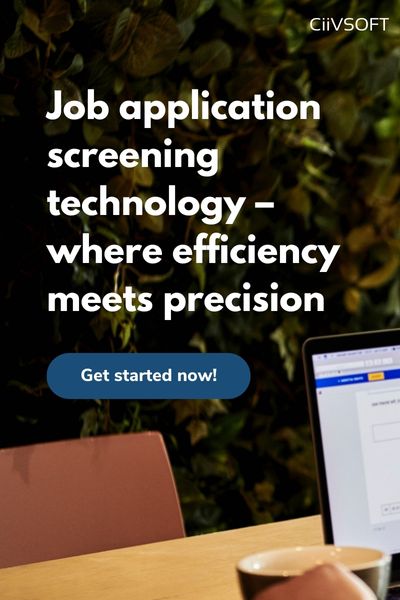Recruitment automation is the application of technology to automate the recruitment workflow. This means that tasks traditionally carried out by human operators can be automatically completed with software implementation.
How it works
Talent acquisition teams can utilise recruitment automation to perform specific functionalities within their end-to-end process. During key hiring stages such as CV screening, interviewing techniques, background checks, candidate sourcing, engagement and assessment processes. With the intention to improve hiring efficiency, increase productivity and reduce the overall time to fill.
Who’s it for?
Managing high-volume recruitment is a constant challenge amongst many organisations. Juggling multiple live job vacancies, together with high application rates can put a strain on resources. That is intensified with the exclusion of recruitment automation.
High-volume recruiters are a prime example of this. This is because automation excels in assisting and easing everyday recruitment tasks without compromising on top talent.
Recruitment automation is advantageous to hiring teams who feel stretched, strained and pressured in their role duties. Pressures that stem from time restraints, difficulty in sourcing top talent and inconsistencies within the hiring process as a whole.
Real-life recruitment automation examples
Spotlight on:
- Automated CV screening – removes manual job application screening and review. Placing the responsibility of this highly time-consuming task on automation. By doing so, recruitment teams will experience a fast and unbiased screening of job applications. Job matching candidates are based on their likelihood to fit the role, due to factors such as experience, skills and job titles that automation is programmed to pick out.
- Automated candidate search and discovery – many high-volume employment teams use an applicant tracking system to manage the hiring process, as well as job adverts and applications. Automated solutions can help increase the performance of their current system. Such as automated candidate discovery which will automatically search an existing candidate database to recommend qualified candidates.
Key benefits
1. Speed up the hiring process
It takes 15 hours to manually review 100 job applications. Whereas with CV screening technology it takes hiring automation only 6 seconds. These results speak for themselves when highlighting the time-saving benefits of automation.
2. Promotes inclusivity
Whether a recruiter is using automation to search their ATS database for prehistoric candidates or using automation to automatically screen job applications – each method will be dependent on a candidate’s skills match, experience level and job compatibility, which will determine their matching position.
Recruitment automation is programmed to focus solely on set specifics and will disregard personal candidate qualities, which could influence their application (components such as their name, gender, nationality and age.).
3. Prioritises quality of hire
Automating time-consuming recruiting tasks generates a streamlined hiring process. Recruiters are essentially given back the time they had previously spent on sourcing and scanning job applications and can quickly move the quality of hire to the forefront of their recruitment priorities.
4. Improves candidate engagement and experience
As recruitment automation can give back time to talent acquisition teams, it means further attention, communication and care can be given to candidates. Which are hugely advantageous in improving the candidate experience and decreasing the risk of dropout.
Additionally, there are many automated communication systems to keep candidates in ‘the loop’ (such as chatbots, interview scheduling, and automated messaging) that increase engagement and improve the candidate’s journey. By providing key information and reassurance on their application status.
5. Produces effective results
Data is generated through automated recruitment solutions. The recruiter is presented with data-driven results that help make more strategic hiring decisions. This is because the reason to hire (or simply just progress to an interview stage) is based on evidence such as skills and experience in accordance with role correlation.
As a consequence of this, the risk of human favouritism is minimised. Derived potentially from unconscious bias that will affect key hiring choices.
What effect will recruitment automation have on the recruiter?
What are the risks?
Whilst there are many benefits to recruitment automation, it is not without its risks.
A successful recruiter will recognise the potential for automation in the hiring process. But an unsuccessful recruiter will try to implement automated solutions to many different aspects of the hiring process. Over-automation threatens candidate experience, and recruitment jobs and sacrifices human interaction.
AI vs automation
Last year, Amazon came under fire for their sexist recruiting tool which would favour men over women for technical jobs. The AI system, originally designed to review job applications, allegedly taught itself to downgrade resumes that contain the word ‘women’s’.
However, it is worth noting that Artificial Intelligence and automation are not the same. AI imitates human intelligence, action and decision-making. All of which can increase the probability of AI learning human bias. Whereas automaton focuses on automatically completing repetitive and manual tasks.
Take for example AI job application screening. This artificial approach will rank CVs/resumes and make the decision on which candidates are right for the role. Whereas automation will match applicants against the job description and present results for a human recruiter to decide who should progress further.
Final thoughts
Recruitment automation is designed to assist, not replace. It promotes a healthy ‘recruiter and technology’ partnership by facilitating administrative tasks that take up valuable parts of the recruiter’s workday. To ensure they remain the key decision-makers and human always remains in recruitment.








